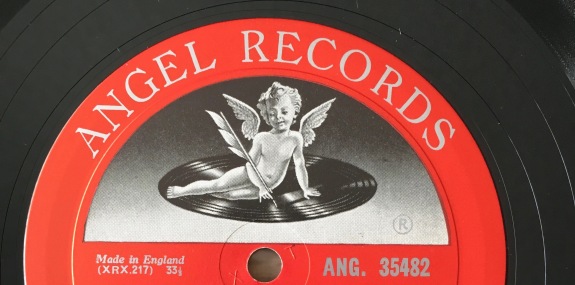[From the archive, first published in 2006.]
I remember the day that the woman walked into the Tower Records I worked at — the classical annex on Sunset Boulevard in L.A. — and asked me for the best record in the store. I got a little snooty with her, like Jack Black in “High Fidelity.”
I told her that “these aren’t hamburgers,” you can’t say which one is the best. I offered to show her some good ones, and let her decide. I recall that I ended up selling her Carlo Maria Giulini’s recording of the “Eroica” Symphony. I hoped it would change her life.
Clerking at Tower Records for two summers in the mid-’80s (between stints at grad school) was an education in itself. Your customers ran the gamut from dimwits to seasoned connoisseurs, many of whom came in for their regular fix (stacks of records) and stayed to chat. My fellow clerks were also endlessly knowledgeable (for kicks, we’d open up several different recordings of the same piece and debate their merits) and a few of us even went on to bigger (though maybe not better) things. Mark Ringer, the author of a recent, lauded guide to Monteverdi, was one such colleague.
The death of Tower Records (bankrupt, liquidated) is a serious blow for classical music. With the disappearance of the independent dealer, Tower became the most reliable and comprehensive source for classical-music recordings over the past few decades. According to The New York Times, Tower alone accounted for perhaps as much as 50 percent of all classical record sales. It’s not easy to imagine how the store will be replaced.
Browsing is important — absolutely necessary — for the classical buyer. I saw it firsthand. Often, customers didn’t have much of an idea what they wanted when they walked in the door. Often, even if they did, it was a piece of repertoire, a recording of “The Magic Flute,” say, or of “The Four Seasons,” not a specific recording. Which one of the dozens offered they didn’t know; they’d browse and find out, often with our help.
And while they were at it, they’d see other things. Ah, a new Pollini recording they hadn’t heard about, a newly restored Klemperer re-issue, a live recording never before released of Callas singing Bellini. You browsed, you discovered. Who knew Tchaikovsky wrote a seventh symphony (the “Manfred”)? You weren’t likely to find out about any of these recordings, and most others, unless you browsed.
Having a knowledgeable clerk on hand is also crucial to the classical-buying process. This is not only so for the novice listener. A knowledgeable clerk (record stores don’t always have them, but Tower had its fair share) knows his stock, knows what’s best, knows the deals. With its vast back catalog comprising a history of Western music stretching back to the Middle Ages and even earlier, classical recordings require a music-critic guide at ground level — the knowledgeable record clerk.
At the Laguna Hills Tower Records, that was my friend Charlie Brand, who knows more about classical recordings than just about anyone I’ve ever met, including myself. I relied on his advice, and he never let me down. (Thanks for turning me onto Maxim Vengerov, Charlie).
You just can’t browse online like you can in a record store. And downloading doesn’t cut it with many (most?) classical fans. (You download “Gotterdammerung.”) In this way, you might say that classical recordings are like hamburgers.


Great article. I still miss Tower Records. You’re right that just browsing could turn up some unknown treasures. I loved doing this and could take hours (especially at the Sunset location) looking though every single thing. The only place I can still do that is Amoeba Music. Although it’s great, it’s not the same…
There’s also Canterbury Records in Pasadena.
Yes, I’ve been to that one too. Happy that they are hanging on. Keeping up that store on prime Colorado Street real estate can’t be cheap.
I can also remember encountering people like actors Charles Nelson Reilly, Albert Paulson, and Bill Bixby at the Sunset classical annex. They seemed to be regulars there. And I remember Charlie at the Laguna Hills store. It’s a different world now.
Customers in my time at the classical annex included Steve Martin, Andre Previn, Pinchas Zukerman and a porn actress who asked to have the sexiest version of Bolero that we had.
There was also something about the camaraderie in the store where a lot of different types of people, whether musicians, record buffs, audiophiles, or just plain browsers interacted. You don’t find that a lot anymore.
Funny, I also saw Charles Nelson Reilly at the Sunset Tower. He was just like his TV persona. I vividly remember him loudly demanding to know where there Lawrence Tibbett recordings were.
Tim, what was your recommendation for sexiest Bolero recording? And, um, how did you know she was a porn actress?
To be totally accurate, she was an EX porn actress and she told us. Though you might guess by looking at her. She was now producing porn films. I’m not sure which Bolero we ended up giving her. If memory serves, she wanted a cassette. The “sexiest” part we took with a grain of salt. I may have given her Monteux. We didn’t have tons of choices in the cassette section.